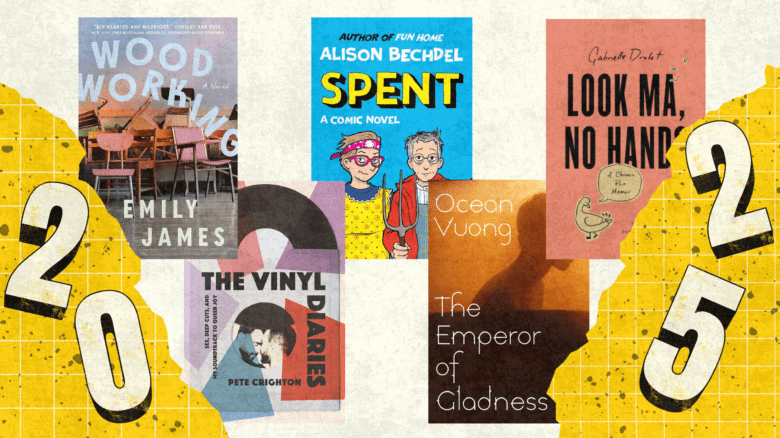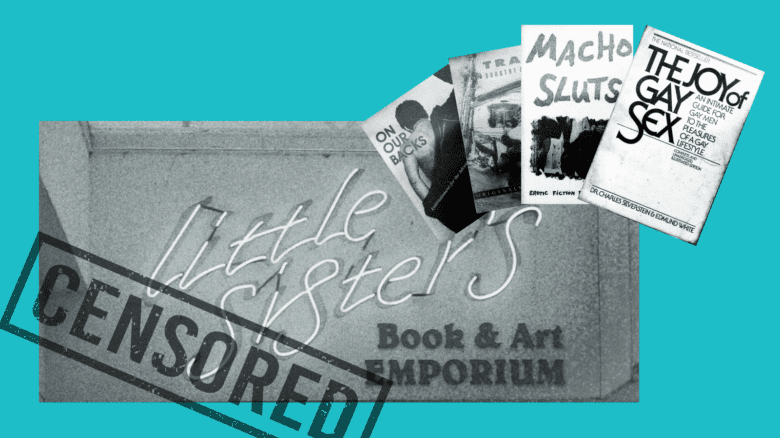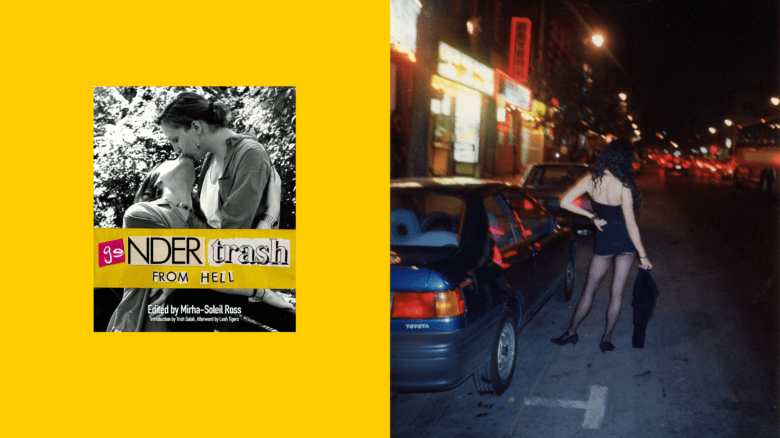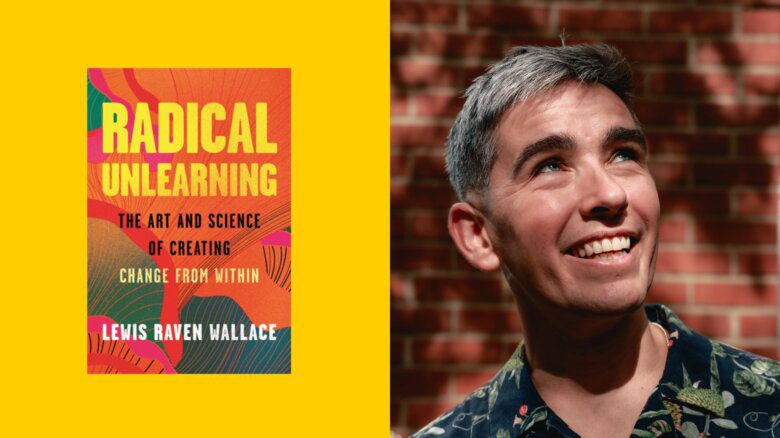Edmund White likes to write about himself. The 82-year-old queer icon is the author of five memoirs and a trilogy of autobiographical novels, including the 1982 classic, A Boy’s Own Life. His newest book, A Previous Life: Another Posthumous Novel, puts a whole new spin on his introspective streak. Set in 2050, it casts the present-day Edmund White as a fictional character who had a doomed relationship with one of the novel’s protagonists.
A Previous Life is the story of husband and wife Ruggero and Constance: he a 70-year-old Sicilian harpsichordist with an international reputation, she a 30-year-old American writer of dubious talent. At the start of the novel, the intergenerational couple embarks on a literary game of truth or dare. Despite vowing to never discuss their previous lives, Ruggero and Constance decide to write up and share their confessions in “an edition for one for each other’s eyes alone.”
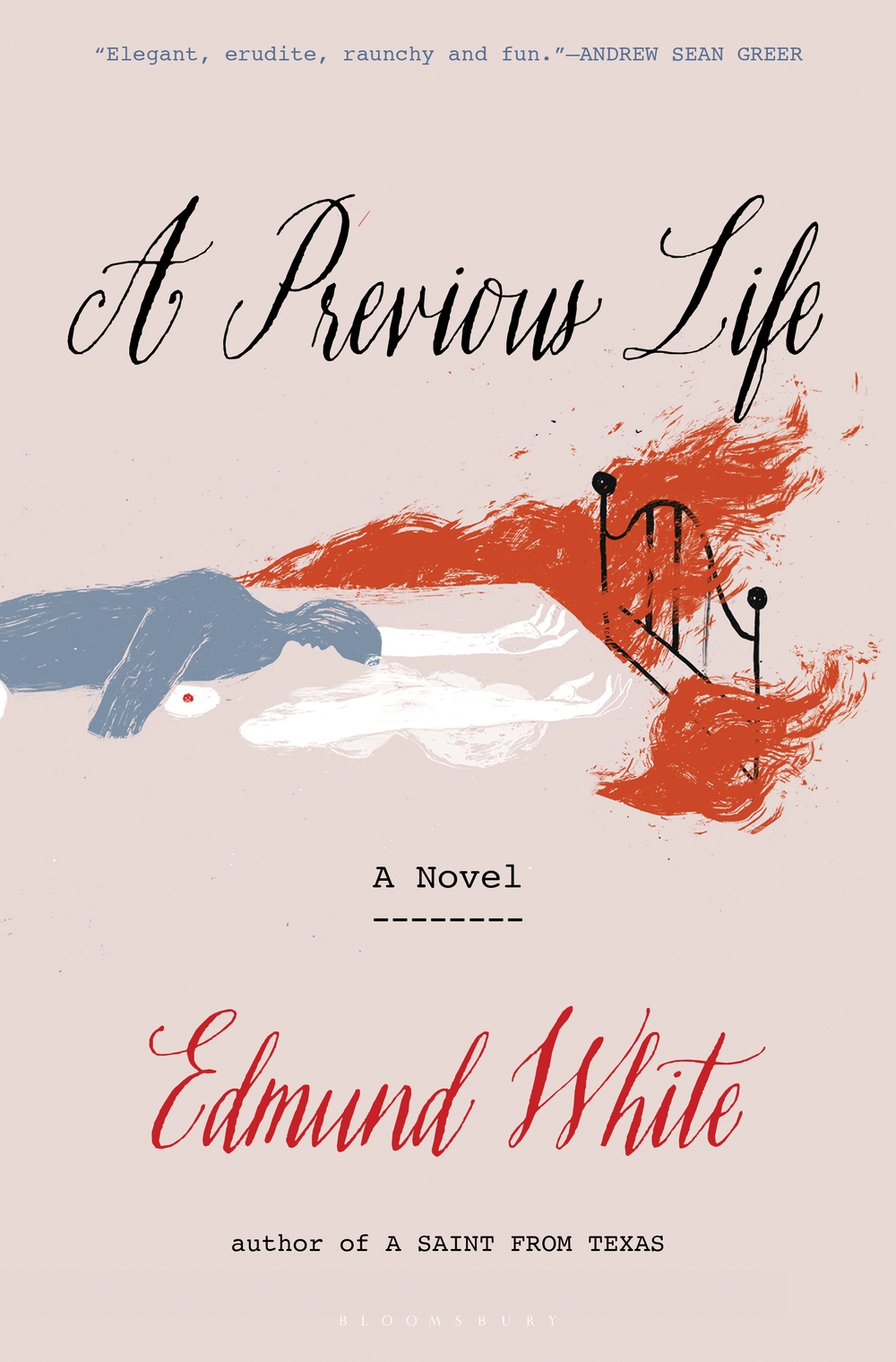
This premise and the setting are literary sleights of hand. A Previous Life is not a work of science fiction, but autofiction. The future looks very much like the present, and White does nothing to guess what technology and society might resemble 30 years from now. The temporal gap and the focus on a fictional straight-seeming couple are literary devices that allow the legendary author to write about a fresh emotional wound: a real-life split with the younger lover on whom he based Ruggero.
The real-life breakup that inspired the novel happened during COVID-19, but White doesn’t take a direct route in writing about the experience. Instead, he circles around the story by writing about Constance and Ruggero in 2050. Both are bisexual and polyamourous. Ruggero, who had an ill-fated love affair with the fictionalized Edmund White in 2020, worries that he’ll be remembered as the man who ruined the author’s life.
When a skiing accident forces Ruggero to convalesce in a Swiss chalet, he and his wife use the downtime to read their respective memoirs to one another. The story modulates between the couple’s written reminiscences and their reactions to sharing them. Ever the clever stylist, White tells us what Ruggero and Constance are thinking as they are reading, signalling transitions with stage directions: “Ruggero read:” and “Constance wondered: Do I lavish enough praise on him?”
But the meat of the story is not Constance and Ruggero’s marriage nor their many other relationships. It is specifically Ruggero’s past love affair with the fictionalized Edmund White. The White who appears in the novel—we’ll call him Edmund—is the real-world author we know, an octogenarian queer-lit icon, with an impressive body of work and a failing physical body. In 2050, he is long dead, but his legacy is uncertain. He is remembered as being too prolific and nowhere near as famous as Felice Picano, “whose posthumous fame grows every year,” and of much lesser interest to academics than humourist David Sedaris.
Ruggero starts to tell the story of his long-ago relationship with Edmund, but Constance leaves him halfway through his recollections. The story remains unfinished until the remarried Constance retrieves Ruggero and Edmund’s email correspondence from Edmund’s biographer. Using these unearthed letters, she completes the story, and we see how Ruggero went from being a fan who sent a fawning letter to the man who broke Edmund’s heart.
White peoples A Previous Life with tragicomic characters who oscillate from the hilarious to the pathetic, often in the same sentence. Ruggero is a narcissist who often marvels at the impact of his presence on others. Constance is an opportunist who cherry-picks elements of her identity to get ahead. Edmund, seen through the eyes of Constance, Ruggero and others, is a submissive old man who debased himself to be with the stunning Sicilian.
“I must have written my first gay novel when I was 15, but I never submitted it to anybody because I was afraid of being rejected.”
Secondary figures include Ruggero and Constance’s other partners, each of whom represents a failure to learn from past mistakes and break destructive patterns. Among these are Cesare, Ruggero’s tone-deaf ex-boyfriend who joins the priesthood; Brunhilde, Ruggero’s ex-wife, whose family was exiled to Switzerland by the German government after the Second World War; Howard, the closeted writer hailed as the American Proust, who marries Constance as a beard; and Jason, the bland suburbanite who gives Constance children after she leaves Ruggero.
A Previous Life is fractured, fragmented and dense. Competing narratives circle and echo each other and coalesce into a story that feels like the chaos that follows a breakup. White has structured a novel that mimics how a spurned lover deconstructs a failed relationship, puts the once-beloved on trial and arrives at a verdict about their shared history.
White’s trademark wit, keen observations on human frailty and folly and riotously explicit sex are intimately familiar to longtime readers. But this autofictional novel feels strange, exciting and fresh, threatening to collapse on itself without doing so.
Xtra talked to White via Zoom from his New York City apartment.
You set the novel in the future, but there’s not much technology or extrapolation.
I don’t really benefit from my science fiction and future date because all the technology and everything is the same as it is now, even academia. But the one advantage I get is that Edmund White has been long dead. And so I get to be funny, in a masochistic way, about him being a forgotten author.
A present-day scene in A Previous Life depicts masking, handwashing and forming a COVID-19 bubble. It is shocking to see a literary depiction of the pandemic while we’re still in it. Do you think people will write about COVID-19, or are we going to memory hole the virus?
I think there will be people writing about it because there’s usually an eight to 10-year pause between the experience and the writing. Like with gay liberation: Stonewall happened in 1969, but the first novels dealing with it didn’t come out until 1978. I think that’s the rhythm. Also, in her wonderful new book, In Paradise, Hanya Yanagihara casts those epidemics way into the future; hundreds of years, and they still have epidemics.
In the novel, you depict Ruggero as a narcissist who is very aware of his physical beauty. At the same time, you fictionalize yourself as submissive, writing in detail about your physical failings (saggy tits, micropenis, folds of fat). Is this self-debasement not a form of narcissism?
I think of myself as a literary exhibitionist. That is, in real life I’m neither a voyeur nor an exhibitionist. Being an exhibitionist, sexually or even socially, would make me blush. People oftentimes presume that because I’m so explicit in my writing about myself, that I must be the same way in life. But many times, that assumption embarrasses me in real life.
I must have written my first gay novel when I was 15, in a period when I had never read a gay novel—I wanted to write about sex and being gay and all that. And so I wrote a book during study hall at my boarding school. I would write the novel in the evening, and my mother’s secretary typed it up. But I never submitted it to anybody because I was afraid of being rejected. But anyway, from the very beginning, I enjoyed writing explicitly about sex. In my mind, at least, it was a kind of truth-telling, and people shied away from that kind of explicitness about a subject which seemed absolutely essential and determinative of behaviour.
Is it challenging to write sex scenes that are literary and explicit today, when explicit visual porn is ubiquitous?
I think there are two axes of pornography. One is: Would you rather, when you’re masturbating, think about something that actually happened to you, or something that might ideally happen to you? And the other axis is: Do you prefer a written or a visual version of that? In my case, it’s always the actual experience and the written version. And I suppose that sets up the project, which is to transcribe into words what sex acts you remember. There’s both memory and there’s imitation. But it is a transcription into a different medium from the one you experienced. Many people, while they’re having sex, egg themselves on by saying dirty words. So there’s always a verbal—or there can be a verbal—aspect to physical sex. But writing about it is a kind of transcription.
The other thing I’ve thought is that pornography—[Susan] Sontag wrote an interesting essay about this—is a sort of one-handed reading. It dare not have too elaborate a vocabulary or get sidetracked too much, because the rhythm must be the rhythm of masturbation and the comic must be excluded. I’ve always enjoyed writing about the comedy of sex. [Philosopher] Henri Bergson said, “Comedy begins when the body defies the spirit.” It’s like the two young lovers who are going to run out the revolving door, jump in the car and go off to live together, but they can’t get the door to work. That’s the beginning. When material reality defeats the ambitions of the spirit, that can be funny. I enjoy writing about funny sex, but also hot sex.
Do you think people raised purely on today’s visual pornography have less of a sexual vocabulary or imagination?
I don’t think so. I think that people manage to have really good sex now and it can be quite imaginative. A lot of people of all ages, I’ve discovered, are into role-playing, which in and of itself is verbal, imaginative and theatrical.
In the novel, Ruggero writes to the fictional Edmund, “I love you for your soul, not for your body.” It’s almost like he has a revulsion toward your body. Does it surprise you that younger men might find your aging body attractive?
[The real-life lover I based Ruggero upon] wasn’t revolted. In real life, we had an awful lot of sex, almost daily, and he would initiate it. I think that’s hard to fake. I think he was really attracted to me and really loved me for three years, but then didn’t.
But is it just a physical thing, or are younger men attracted to power and money? There’s a popular stereotype that intergenerational relationships are motivated by financial interest.
I’ve had hustler lovers, and I sort of enjoy paying somebody because it puts me back in the driver’s seat. But generally, no. The people I meet on Silverdaddies [a dating site for older gay men and their younger admirers] are quite explicit about not being kept. But I think it’s a fetish, like when somebody likes feet—if you have big feet, they like big feet. If some people like old people, and they like my aging body, it surprises me.
Is it a fetish or just a preference, as in, “gentlemen prefer blondes?”
I think there’s a fetishistic aspect, at least if you look at how people online describe what they’re looking for. It’s often a big, big, power stomach and sagging tits. They seem to really like those specific things that I, as a “normal” gay, grew up thinking were horrible faults. But I’ve seen my list of faults fetishized by many attractive young men.
At the same time, aren’t you fetishizing youth? Or is that the “natural” order of things? I’m using a strong word here because “fetishizing” is also a strong word.
I don’t think anything’s very natural. I do, of course, fetishize youth, but that’s 90 percent of humanity.
When a friend tells Constance that she and Roger are in a co-dependent relationship, she replies, “That sounds like my definition of love.” Do you agree?
I think that what others propose as a neurotic condition is romantic love. When people say, “Oh, they’re co-dependent,” they mean, “They always want to be together.” They care intensely about what the other thinks of them and depend on each other for moral support, encouragement and zest in life. Does that not sound like love?
You and your husband [writer Michael Carroll] have been together for 25 years and married since 2013. What’s the secret to your relationship?
I’m 25 years older than my partner, and it’s a very dynamic relationship where we’re both writers. But he’s becoming a well-known writer and has won important awards and things. We were both together, just now, at a Key West literary seminar, and he was, I think, more of a star than I was because he has a more engaging personality.
[White describes how there are two kinds of love: esteem-love and passion love.] In esteem-love, you want your partner to be happy, even if that means he’ll be unfaithful to you, but you don’t want to deny him through some notion of loyalty. In passion-love, people are very possessive, and they bitterly resent any kind of promiscuity.
One of the phenomena that everybody notices is that gay lovers, after they break up, usually stay friends. And straight couples, after they divorce, almost never do. I think it’s because the model for a mature—or ripe—gay relationship is the best friend. Whereas in a straight marriage, it’s husband and wife.
Constance and Ruggero are openly bisexual and polyamorous. Do you think we, as a society, are open to wider identities than straight and gay?
[A good number of college students these days] say they’re bisexual. I don’t know if that’s an ideal or whether it really reflects their practice. But even in the 1970s, I would have young, straight couples approach me and ask me if I would go to bed with them. And that seemed odd to me because, certainly, most gay men my age are hostile to the idea of bisexuality. They think it’s just a stage of coming out as gay, and they resent it and dislike it. But my first lover was bisexual, and I introduced him to his first and second wives. And then he found on his own his third and fourth wives. But anyway, I believe that people are really bisexual. Some people are.
This interview has been edited for length and clarity.
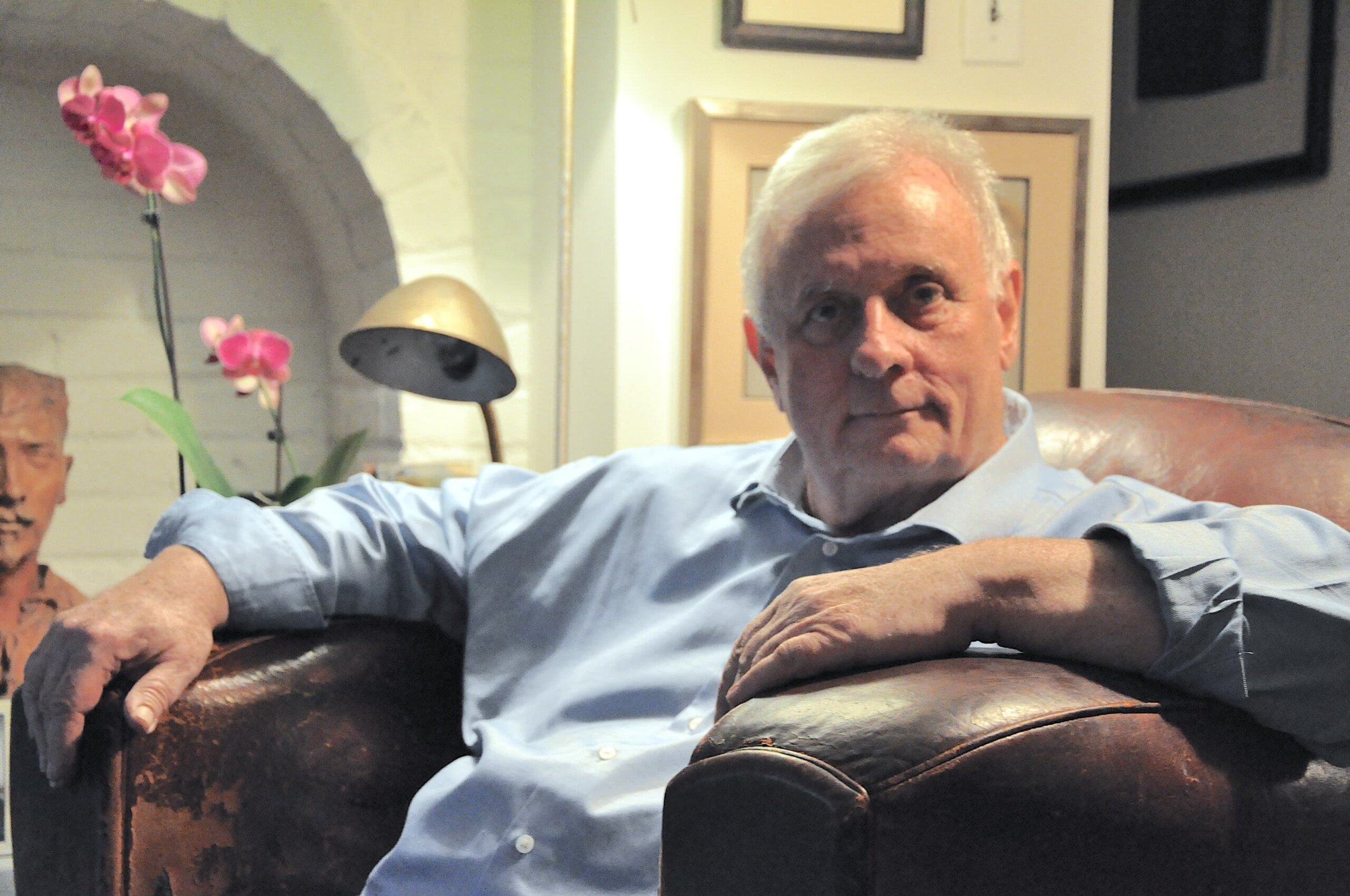

 Why you can trust Xtra
Why you can trust Xtra